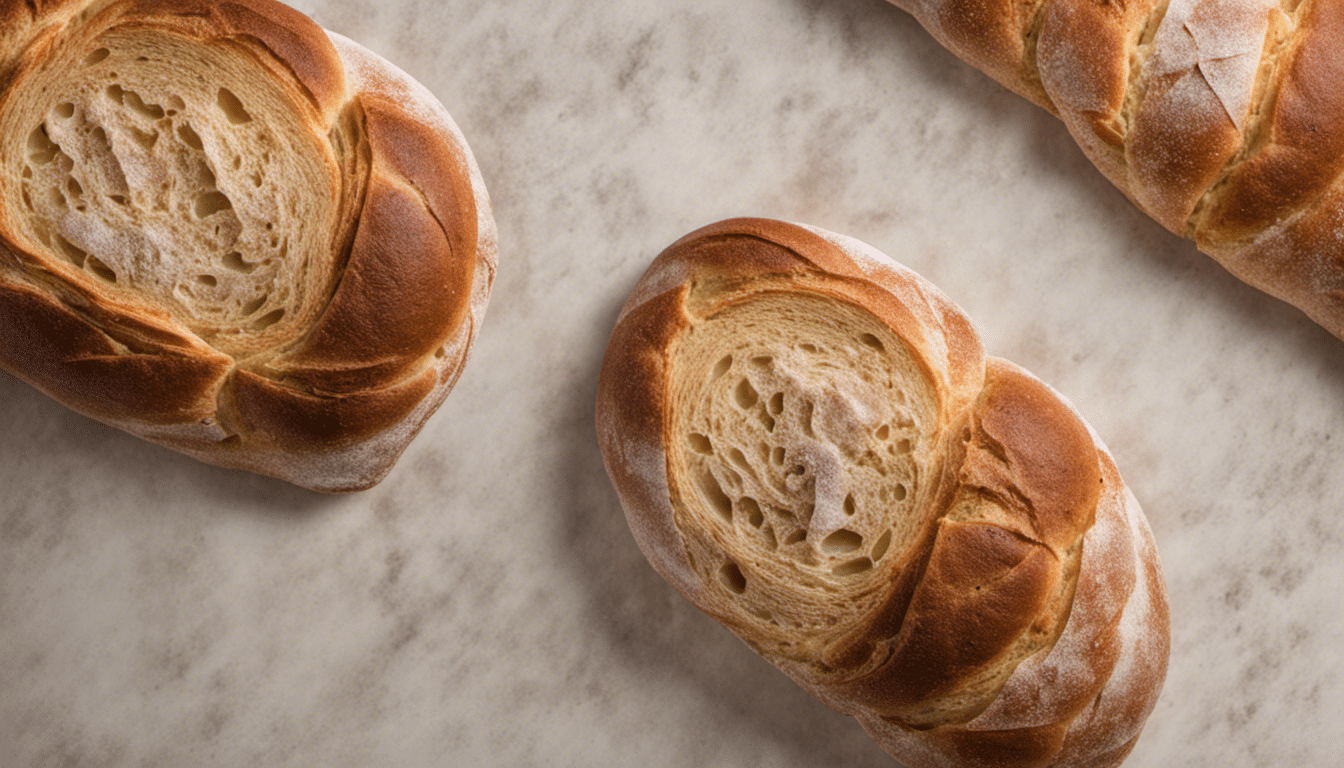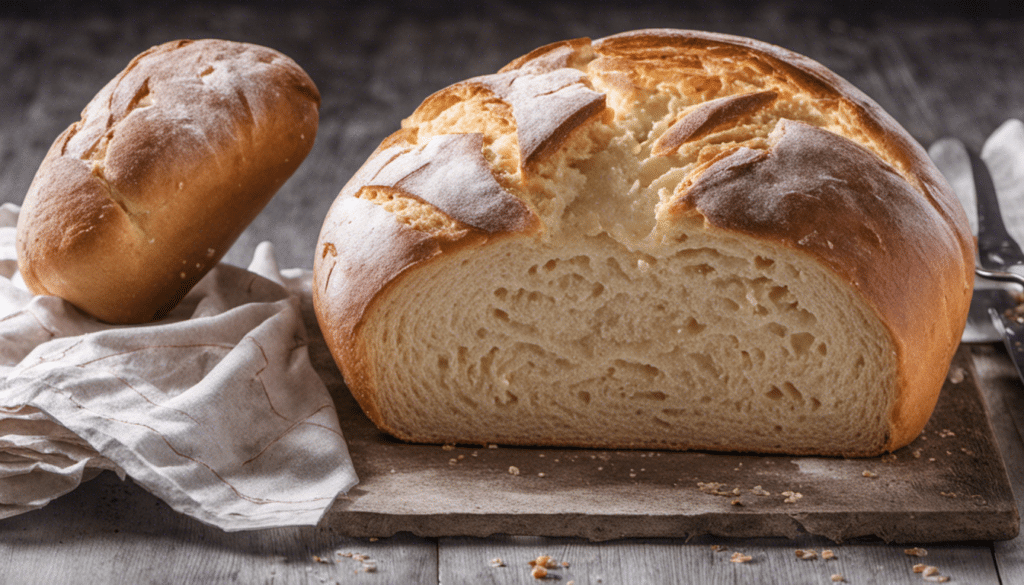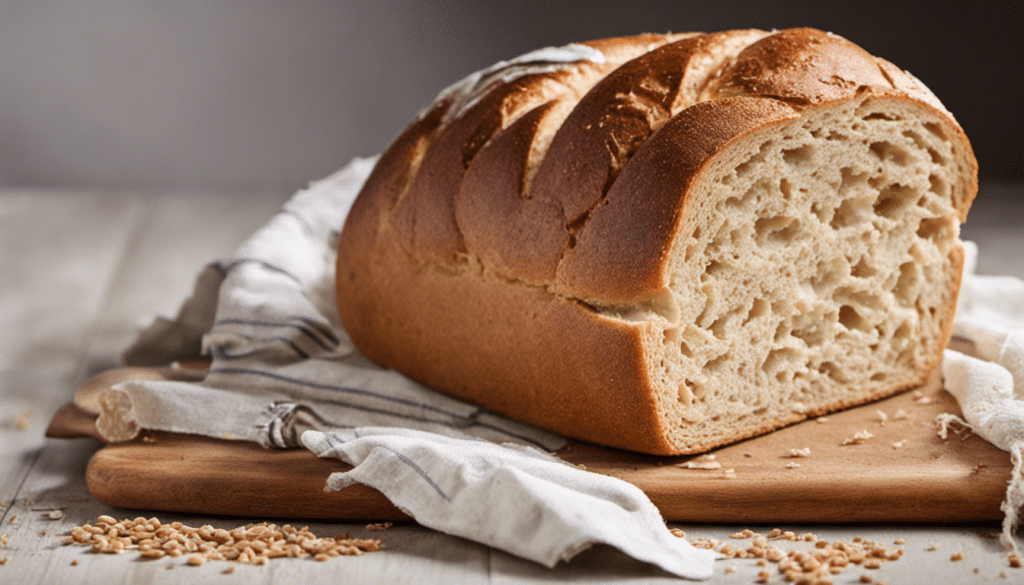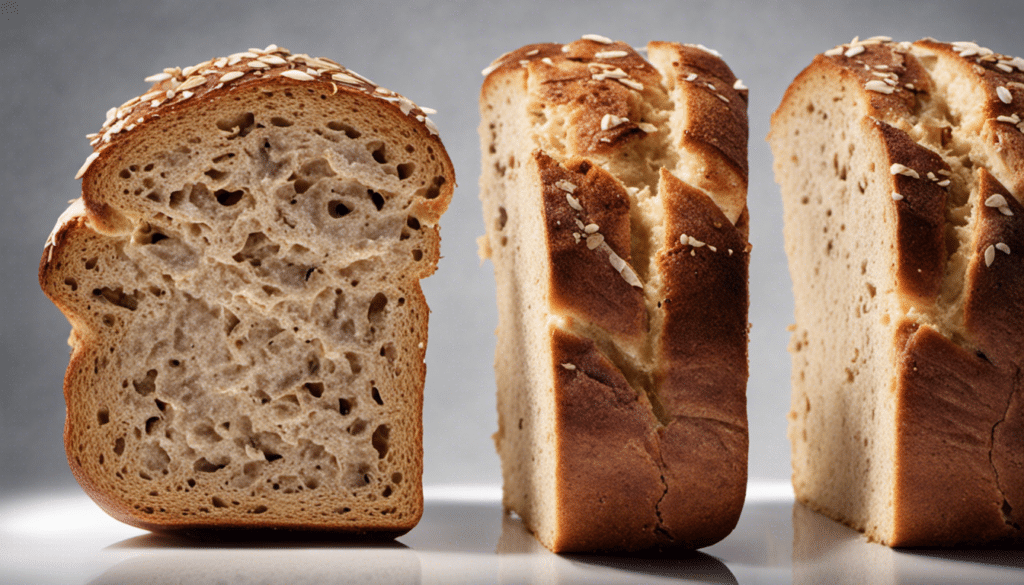| Prep: 1.5 cups warm water | Cook: 1 teaspoon white sugar | Difficulty: 2 teaspoons active dry yeast | Serves: 4 cups bread flour |
| Prep: 2 teaspoons salt | Cook: 2 tablespoons olive oil | Difficulty: Easy | Serves: 6 |
| kcal | fat | saturates | carbs |
| 295 | 4.9g | 0.7g | 52.5g |
| sugars | fibre | protein | salt |
| 1.2g | 1.9g | 8.2g | 0.79g |
About Pane Ticinese
Take a moment to consider the unassuming loaf that is Pane Ticinese. This traditional Swiss bread, born in the canton of Ticino, often gets overlooked amidst the expansive world of European breads. Yet, those who veer off the well-trodden path and give Pane Ticinese a chance find themselves rewarded with a delectable culinary experience. Its flavorful and slightly chewy interior, housed in a rustic crust, makes it a favorite among those who have sampled its delights.
The Anatomy of Pane Ticinese

Perfect Pairings for Pane Ticinese
While Pane Ticinese stands proud on its own, it really shines when accompanied by other dishes. In Switzerland, you would often find it served alongside a hearty bowl of Swiss risotto— the creaminess of the risotto wonderfully complemented by the sturdy yet tender texture of the Pane Ticinese. If soup is more your beat, a savory bowl of minestrone or ribollita sits perfectly alongside a thick slice of this bread.
Given its authentic European roots, many compare Pane Ticinese to the Italian Pane Bianco in terms of texture and flavor. Interestingly, Pane Ticinese also shares some resemblance with the classic French Baguette, notorious for its crispy crust and soft, airy crumb. However, the presence of olive oil in Pane Ticinese sets it distinctively apart, giving it a unique edge that rivals its well-known counterparts.
To those unacquainted with the charms of Pane Ticinese, our advice is simple: Don’t overlook this humble Swiss masterpiece. With its tantalizing combination of simplicity and flavor, it’s a must-try for any serious bread lover.
What You’ll Need
- 1.5 cups warm water
- 1 teaspoon white sugar
- 2 teaspoons active dry yeast
- 4 cups bread flour
- 2 teaspoons salt
- 2 tablespoons olive oil
Method
Step One
Firstly, combine the warm water and sugar in a bowl until the sugar is fully dissolved. Add the active dry yeast to the mixture and allow it to sit for about 5 minutes until it becomes frothy. This process will activate the yeast.
Step Two
While the yeast is activating, you can move on to your dry ingredients. In a separate large bowl, whisk together the flour and salt until they are well combined.
Step Three
After the yeast mixture has become frothy, pour it into the bowl with the flour and salt. Add the olive oil while stirring. Continue to mix the ingredients together until a dough begins to form.
Step Four
Next, knead the dough. You can do this either by hand, or by using a stand mixer fitted with a dough hook. Knead the dough until it becomes smooth and elastic. This may take about 10 minutes if done by hand.
Step Five
Place the dough in a greased bowl and cover it with a clean kitchen towel. Allow it to rise in a warm place for about 2 hours, or until it has doubled in size.
Step Six
Once the dough has risen, punch it down to release the air. Shape it into a loaf and place it on a baking sheet lined with parchment paper.
Step Seven
Preheat your oven to 375 degrees Fahrenheit (190 degrees Celsius). Bake the loaf for about 30 minutes, or until it has a golden brown crust. The bread should sound hollow when you tap on the bottom of it.
Step Eight
Let the bread cool before cutting into it. Enjoy your homemade Pane Ticinese!



